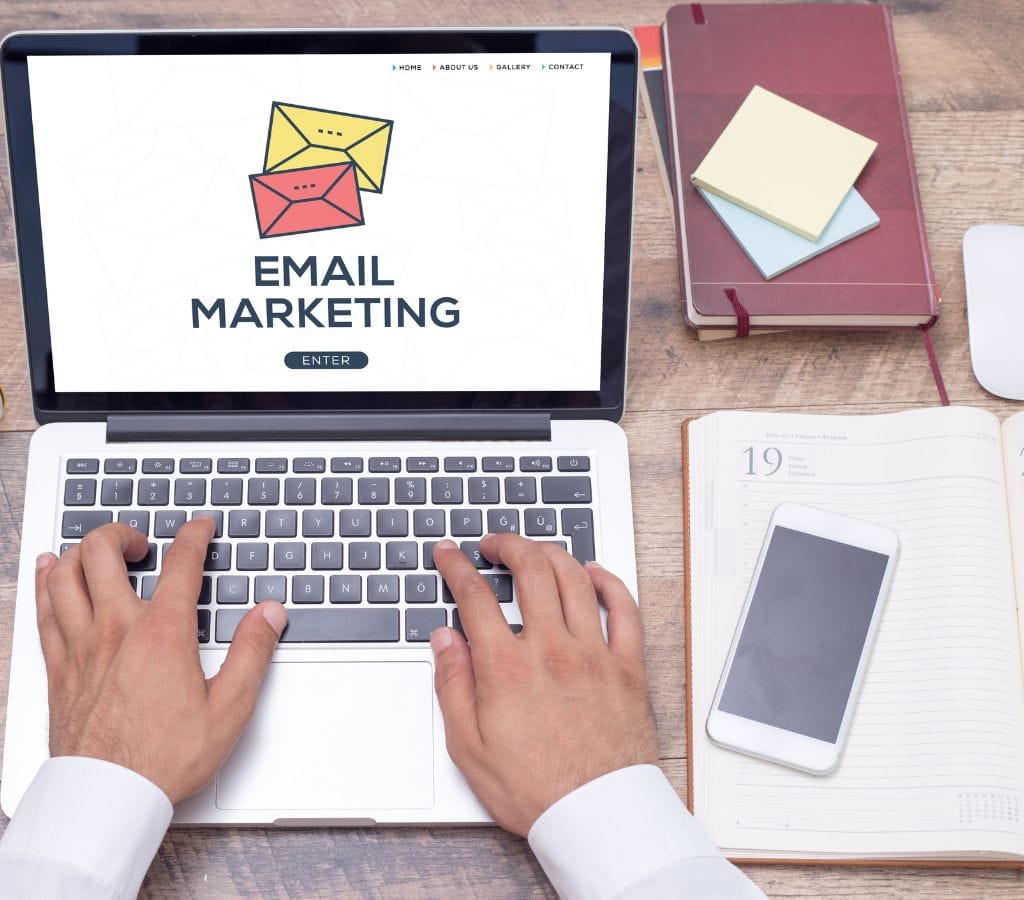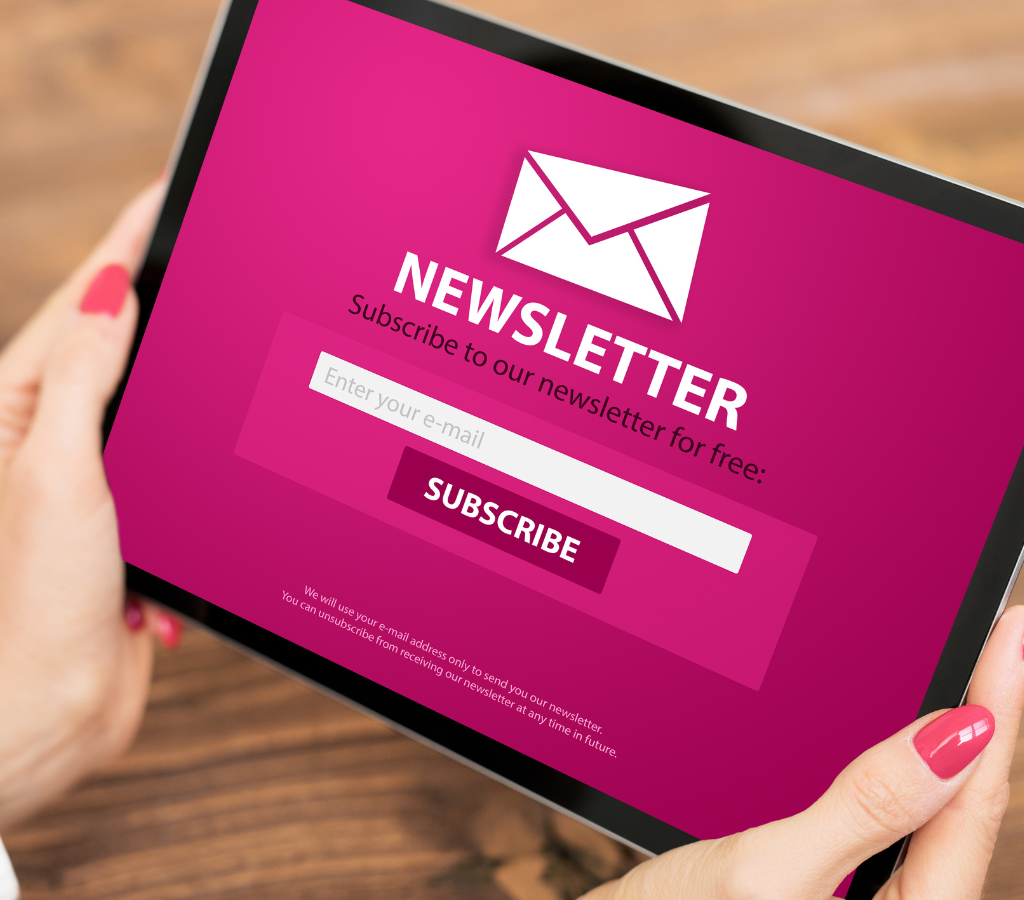In digital marketing, building an email list is very important because it lets you make connections, keep in touch with customers, and encourage engagement and sales. So, we'll show you important steps and tactics on how to create a mailing list, manage traffic, and grow email list that helps businesses reach their marketing goals.
Benefits of Having an Email List
Getting a database of email addresses is not enough to build an email list. It is a strategic method that gives businesses a lot of benefits and chances. Realizing the power of a listing email and making the most of it means understanding how important it is. So, we will talk about why email lists are important for your marketing and how they can help your business.
Direct and Personal Communication Channel
A mailing list helps you communicate with your subscribers directly. Unlike social media and other marketing channels, they will receive emails directly, where algorithms and platform regulations might limit your reach. Because of this, you can send them personalized emails, ads, updates, and useful content immediately.
Building Trust and Relationships
You can earn the trust of your subscribers by sending them regular emails with helpful information. You will become known for consistently communicating and giving out useful and relevant information. As trust grows, your subscribers are likelier to become loyal customers who will interact with your business and buy your products.
Higher Rates of Conversion
Email marketing continues to be one of the best ways to get people to buy a product. According to a study, email has a higher conversion rate than both social media and organic search. Sending customized content and deals to certain email lists can boost conversion rates and revenue.
Affordable Marketing Plan
Email marketing is one of the most cost-effective ways to sell your business. There may be some fees to set up an email marketing service provider initially, but the return on investment (ROI) is usually very high. When you have an email list, you can reach many people without paying extra for ads or promotions.
Retargeting and Re-engagement Opportunities
Email lists can very effectively retarget and re-engage with your customers. Send customized emails with special deals or reminders to subscribers who are interested in your products or services but haven't bought yet. Engaging inactive subscribers again through well-thought-out email marketing is another way to get them back.
Control Over Your Marketing Assets
When it comes to marketing, your email list is something you own and control, unlike social media sites or other third-party outlets. You don't have to worry about algorithm changes or site rules that could make it harder for people to reach or visibility. You have full control over how and when you talk to your audience through an email list so your message gets to them without any outside interference.

How to Set Up Your Email Marketing Account?
The first step in building and managing a listing email is to set up an email marketing account. So, you will learn how to choose the best email marketing service provider and set up your account, making managing your email campaigns easy.
Pick the Best Email Marketing Service
Choosing the right email marketing service company is very important if you want to build your email list. When making your choice, think about the following things:
- Features and Functions: Compare the features and functions that each service offers. Look for customizable themes, task automation, user grouping, and integration with other products.
- Size and Scope: Make sure that the service can handle growing your email list. Consider things such as price range, list size limits, and the ability to send more emails.
- Delivery Rates: This is an important factor in ensuring that your emails get to your users' inboxes. Learn how well the platform delivers emails and how it maintains high inbox placement rates.
- Support and Resources: Find out what kind of help and tools you can get as a user. Look for service providers that offer thorough paperwork, step-by-step guides, and helpful customer service.
Popular Email Marketing Tools
- Mailchimp is known for its user-friendly interface and many tools that both new and experienced users can use.
- ConvertKit is designed to help bloggers, authors, and other content creators with powerful automation and grouping tools.
- AWeber has a lot of useful tools, such as autoreplies, landing page builders, and the ability to do split tests.
- GetResponse is known for its powerful marketing automation tools and many integration choices.
How to Setup Your Email Marketing Account?
It's time to set up your account once you've chosen an email marketing service. Here are the steps you need to take:
- Sign up: Create an account on the service provider's website. Many service companies let you try their platform for free before you sign up for a full plan.
- Authenticate your account: Some service providers may ask you to click on a proof link sent to your email address to confirm your account.
- Create your profile: Type in details about your business, such as your name, email address, and website address (URL). This will be used to personalize your emails and follow anti-spam rules.
- Set up your email settings: Choose the name and email address that will appear as the source of your emails. You can also set up any other settings you want, such as the email reply address and email alerts.
- Connect your domain (optional): If you want to send emails from your domain (for example, info@yourdomain.com), connect your domain and set up the necessary DNS records by following the provider's directions.
- Get to know the platform: Spend some time looking at its layout, features, and how they work. Get comfortable with creating email campaigns, building templates, and tracking your subscribers.
Now, you can start building your email list. Don't forget to look at the provider's documentation and support resources for specific instructions or ways to fix problems.

How to Make an Enticing Opt-In Form for Email List?
Making an interesting opt-in form is important to build a free email list. So, we will talk about the most important parts and best practices for making an opt-in form that turns visitors into subscribers.
Designing an Effective Opt-In Form
- Keep it Simple: Opt-in forms should be neat, appealing to the eye, and simple to understand. Do not fill out the form with too many questions or pieces of information. Just put your name and email address in the box.
- Clear Call-to-Action: Use a call-to-action (CTA) button that is clear and direct to get people to join. Such phrases are "Subscribe Now," "Get Instant Access," and "Join Our Exclusive Community."
- Attention-Grabbing Headline: Include a convincing headline that tells people why they should join your email list. Make it clear what members will get out of signing up.
- Engaging Copy: Write short, convincing copy that shows why people should subscribe. Describe what members will get and how it will improve their lives or businesses.
- Visual Elements: Use colors, fonts, and images that are pleasing to the eye, fit your brand's personality, and appeal to your target audience. Separate the colors to make the shape stand out.
- Mobile-Friendly Design: Make sure your opt-in form works well on phones. Making it flexible and showing up right on different screen sizes will make it easy for mobile users to sign up.
Put Your Opt-In Form Strategically
- Above the Fold: Your opt-in form should be placed above the fold, which means that you shouldn't have to scroll down the page to see it. This makes sure that the form is the first thing people see when they visit your website.
- Sidebar or Widget Area: Put an opt-in form that stays on your website in the sidebar or widget area. In this way, it stays visible even as people look at other pages.
- Pop-up or Lightbox: You could use an opt-in form that pops up after a certain amount of time, when a user wants to leave the page, or when they scroll down a certain amount. But be careful not to interrupt the user experience or make guests feel too much with too many pop-ups.
- Inline Forms: Put opt-in forms inside blog posts or landing pages that are important to your audience. This lets you get the attention of people who are already interested in the subject and are actively reading.
Give Value to Subscribers
- Lead Magnets: To get people to join, give them something useful, such as an eBook, a checklist, a template, or special content that they can't get anywhere else. Make sure that the lead magnet fits with your overall content plan and meets the needs of your target audience.
- Content Preview: Give subscribers a sneak peek at the material they'll be getting. This could mean showing off your best blog posts, giving away sneak peeks of new content, or announcing the start of a new product.
- Exclusive Deals and Discounts: Offer special deals, early access to new goods or services, or discounts that are only available to visitors of your site. This makes subscribers feel special and gives them worth right away.
- Newsletter Subscription: Tell people why they should sign up for your newsletter, such as receiving tips, news, and information about your industry right in their inbox. Stress the unique value your paper offers.

How to Drive Traffic to Your Email List?
After creating a compelling opt-in form, send traffic to it to increase email list subscriptions. So, we will discuss how to increase traffic to your email list.
Using Social Media to Drive Traffic
- Promoting Your Email Lists on Social Media: Use platforms such as Facebook, Twitter, Instagram, and LinkedIn to promote your opt-in form. Then, create compelling posts explaining the subscription benefits and a clear link to the form.
- Advertising on Social Media: Run targeted ad campaigns with a clear call to action and appealing design.
- Giveaways on Social Media: Hold contests or giveaways on social media, requiring email list membership to enter.
- Working with Influencers: Collaborate with influential people or artists to promote your mailing list.
Optimizing Your Website to Create an Email List
- Strategic Placement: In addition to the opt-in form, put call-to-action buttons or links in smart places all over your website. If you put these in the header, footer, sidebar, or related blog posts, people will be more likely to read your blog.
- Content Upgrades: Add extra useful content to your blog posts, such as bonus materials, exclusive tips, or templates. Offer these upgrades to readers in exchange for subscribing to your email list.
- Exit-intent Pop-ups: Use exit-intent pop-ups, which show up when people are about to leave your website. Before they leave, offer a discount or special content to persuade them to subscribe.
- Landing Pages: Make landing pages that show off your lead magnet and explain why people should subscribe. In addition, direct traffic from various sources to these landing pages to maximize conversions.
Using SEO and Paid Ads
- Keyword Optimization: Use relevant keywords in the text of your website and blog to move up in the organic search results. If your website ranks higher in search engine results, more people will naturally visit your opt-in form.
- Guest Blogging: Write posts for reputable websites as a guest blogger and include a link to your opt-in form in your author's name or in the post itself. As a result, visitors from the guest site can be sent to your opt-in form.
- Paid Ads: You might want to run paid ad campaigns on search engines (like Google Ads) or social media sites (like Facebook Ads and LinkedIn Ads). Focus on certain keywords, demographics, or hobbies to reach possible subscribers.
- Retargeting Campaigns: You can show ads to people who have been to your website but haven't joined by setting up retargeting campaigns. Reminding them of what they'll get out of joining your email list will make it more likely that they will do so.

How to Grow and Manage Your Email List?
Keeping up with and building your email list is an ongoing process that needs planning and focus. In this part, we'll talk about the most important things you need to do to keep your email list healthy and grow it so that you can get more from your subscribers.
Regularly Sending Useful Emails
- Plan to Send Emails Regularly: Make sure your email plan fits your content strategy and what your customers expect from you. In addition, consistency will increase the trust and awareness of your business.
- Give Your Subscribers Useful Content: Give your subscribers content that is important, useful, and full of useful information. Tell them about your business and give them tips, tutorials, deals, and other material that fits their needs and interests.
- Make Your Emails More Personal: Use personalization methods to address email subscribers by name. You can also split your email list into groups based on things like who they are, what they like, or what they usually buy. You can get more people interested by making content more relevant to certain groups.
- Review and Improve Email Campaigns: You should always look at and improve your email campaigns to get more hits, clicks, and sales. To find out what your readers like best, try sending emails with different layouts, subject lines, calls to action, and types of information.
Separating Your Email List
- Demographic Segmentation: Put people on your email list into groups based on their age, gender, job, or where they live. This lets you make content and deals that are more relevant to certain groups of people.
- Behavior-based Segmentation: Subscribers are put into groups based on how they've reacted to your emails, used your website, or bought things from you in the past. This is called behavior-based segmentation. Send relevant content and deals to specific groups to get more people to interact with and buy from you.
- Interest-based Segmentation: If you want to know what your subscribers are interested in, you can look at how they interact with different types of material. A good way to send information to people on your list is to divide them into groups based on what they're interested in.
- Customer Lifecycle Segmentation: Divide your list of subscribers into groups based on where they are in the customer journey. For example, you could divide your list of subscribers into groups of new subscribers, busy customers, and inactive subscribers. When you send emails, make sure that each stage's wants and habits are taken into account.
Managing Your Email List
- Regularly Clean and Update Your List: Keep your list clean and up to date by getting rid of fake email addresses, unsubscribe requests, and people who don't use your list very often. This makes sure that your emails get to people who want to see them and keeps your email list healthy.
- Use Double Opt-In: This makes sure that users' email addresses are right and that they really want to get emails. It also keeps people from whining about spam and makes sure that the people on your list are interested and actively participating.
- Follow with Anti-Spam Regulations: Learn about the CAN-SPAM Act or GDPR (if applicable) and how to follow them. Do not break these rules when you use email marketing. This will help you keep your followers' trust.
Measuring and Improving Email Campaign Performance
- Track Key Metrics: Keep an eye on important email data, such as the number of reads, clicks, sales, and unsubscribes. You should be able to use email data from your email marketing service provider to find out more about how your campaign is doing.
- A/B Testing: To test different parts of your emails, run A/B tests. Change things such as the text, design, calls to action, and subject lines of your emails to see what works best for your fans. Then, use what you learn to make your ads better.
- Analyze Subscriber Feedback: See what subscribers have to say, such as replies or poll results. Take the time to read this feedback and improve your content. Find out what your followers want and address any issues or concerns that were brought up.
- Always Learn and Adapt: Remember to always learn and get better. Stay up to date on the newest email marketing trends and best practices. To get better at email, always remember what you've learned from your mistakes and change your plans based on that.
These tips will help you manage and grow email list, thereby strengthening your ties with subscribers, increasing their involvement, and achieving better business results. Remember that building email lists is an ongoing process that requires constant work and improvement to stay healthy and beneficial. Join EmailGum for more tips & tricks in email marketing!

